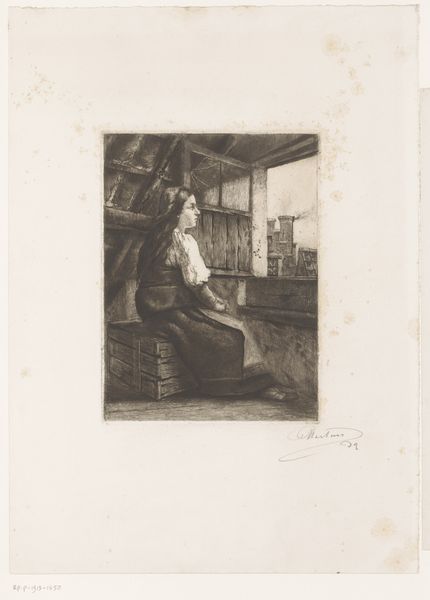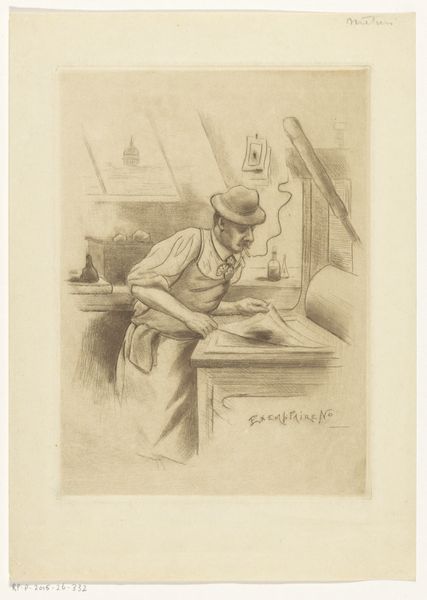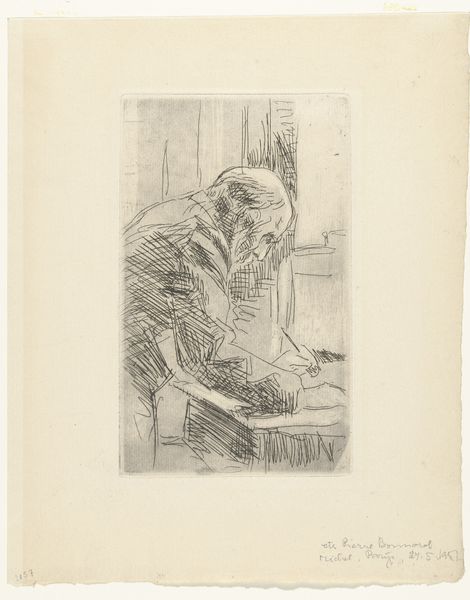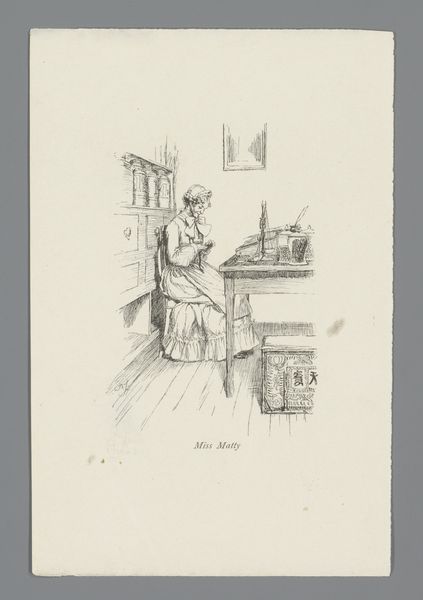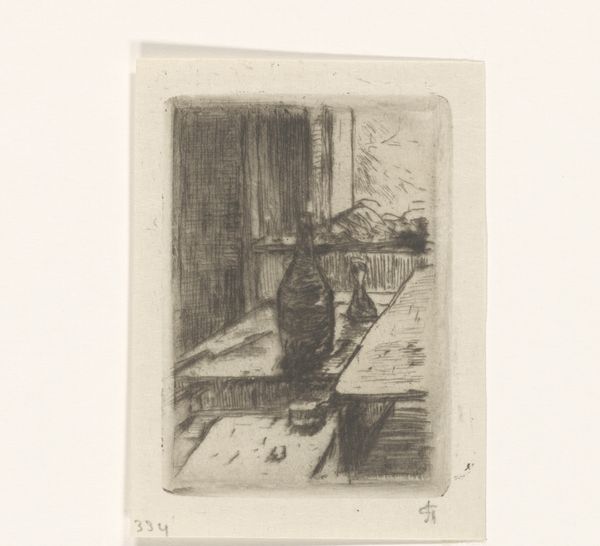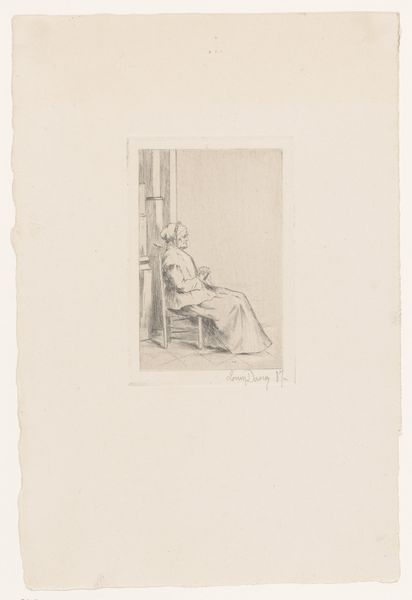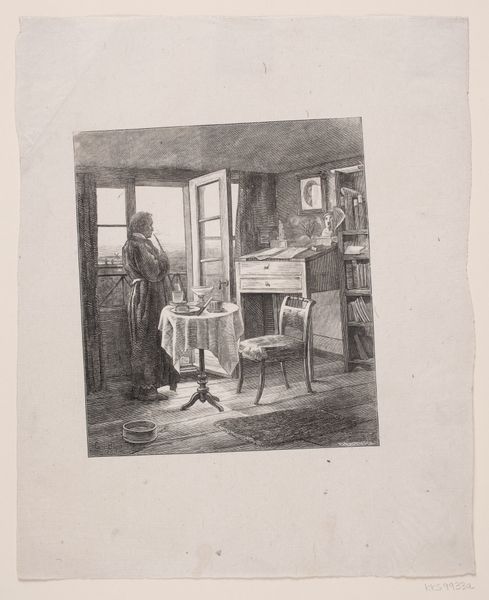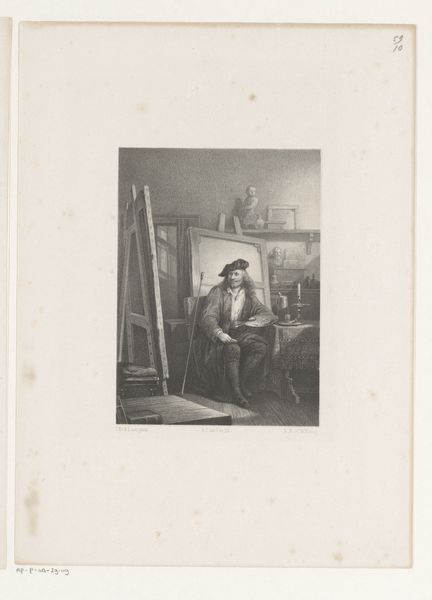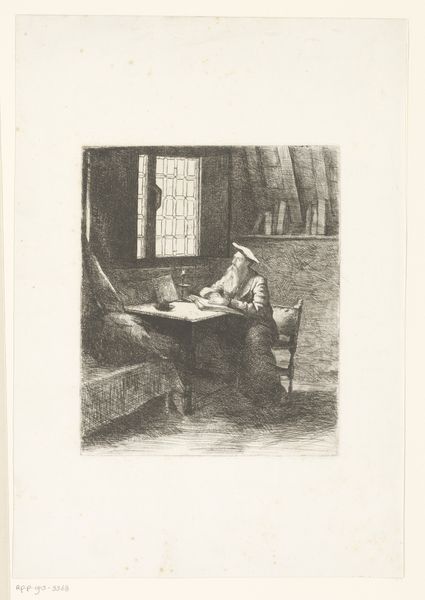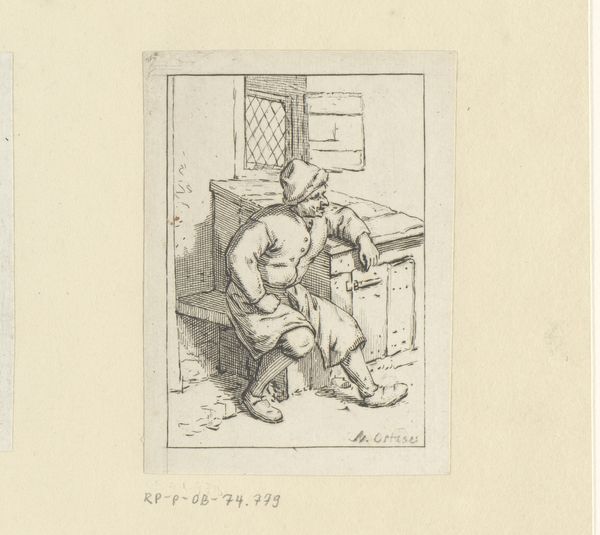
drawing, paper, pencil
#
drawing
#
pencil sketch
#
paper
#
pencil
#
genre-painting
#
realism
Dimensions: height 199 mm, width 149 mm
Copyright: Rijks Museum: Open Domain
Curator: There’s something so quietly evocative about this drawing. A solitary girl perched near a window, gazing out… almost as if lost in thought. Editor: She feels trapped, almost? The limited space, the view of industrial smokestacks, it’s a little oppressive. It gives me that turn-of-the-century melancholy vibe. Curator: Precisely. What you're responding to so viscerally speaks directly to the historical context. This is "Meisje kijkt via een dakvenster naar buiten," or "Girl Looking Out a Skylight," by Charles Mertens, created in 1882. The artist rendered this work in pencil on paper, capturing a scene that offers insights into the societal conditions of the time. Editor: The use of pencil makes it feel more immediate, almost like a snapshot. Like he caught her in a private moment. Curator: Certainly. It invites us into a very intimate observation. Works like these offer visual cues about social status, gender roles, and the rapidly changing landscape due to industrialization. Genre paintings, depicting scenes from everyday life, flourished in this period. Editor: So, the girl at the window… is she looking towards hope or resigned to fate? That distant, blurred horizon juxtaposed against the definite wooden structure of the window… Curator: That's the intriguing ambiguity Mertens captures. It asks us to consider the limited opportunities potentially afforded to young working-class women at that time, maybe facing factory jobs as the landscape shifted towards industry. We need to see these drawings as cultural artifacts, prompting discussions about history, about social progress, about representation. Editor: Yeah… and the way the roof timbers frame her—it feels like a stage, a setting where someone’s about to make a very serious decision. This isn't just about industry and class; it's about the threshold of her choices. Curator: Art serves as an excellent primary source, sparking complex reflections across time. It encourages us to weave personal experiences into the collective tapestry of our shared history. Editor: Absolutely. The artwork is stark, but in the very act of that solitary girl looking outwards, she’s still managing to let the world back in to look back at her. I find it a curiously engaging dynamic.
Comments
No comments
Be the first to comment and join the conversation on the ultimate creative platform.
